|
Green-barred Woodpecker (Colaptes melanochloros)
(aka Green-barred Flicker)
|
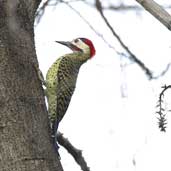 |
Brazil The Green-barred Woodpecker is found in east and central South America from north east Brazil to Bolivia and central Argentina. It likes a variety of habitats from forest to caatinga and desert scrub. It feeds mainly on ants but also catches spiders and eats fruits and berries. |
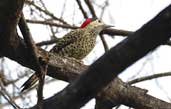 |
The male has a red malar, as in photo 1, while the female has a black malar, as in photo 2. Both sexes are pale green with white on the sides of the head and red on the crown and nape while the forecrown is black. The upperparts are barred black while the underparts have black, heart-shaped spots. |
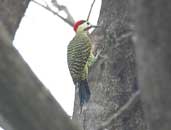 |
When not in a typical woodpecker pose, it sometimes perches on horizontal branches and moves about a bit like a jay (see photos 2 and 4). The fifth photo shows a female just flying off from its perch, a process which involves throwing itself off the branch with wings closed for at least a couple of metres. |
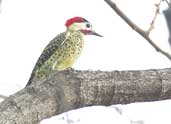 |
There are 5 subspecies which are divided into two groups: the "melanochloros" group which are arboreal and live in forests and savannas; and the "melanolaimus" group found further south which are more terrestrial and are browner above and whiter below. The birds in the first 5 photos belong to the first group and are of the subspecies C. m. nattereri. The bird in the 6th photo is in the second group and is of the sub-species C. m. leucofrenatus showing a golden-orange breast and strongly barred flanks. Belton mentions the hybridisation of the nominate sub-species with C. m. leucofrenatus in Rio Grande do Sul where the nominate is found in the north and C. m. leucofrenatus is found in the south and west of the state. |
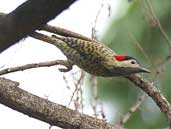 |
The bird in photo 7 is a female of the nominate sub-species. There are illustrations in HBW, Volume 7, Pages 299, 361 and 508; and Sick, Plate 25. |
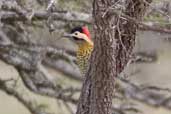 |
|
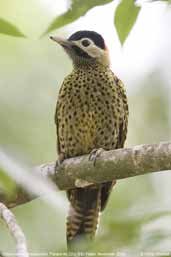 |
|
|
|






